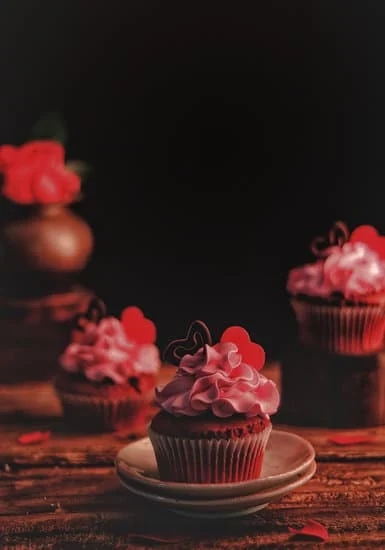Are you wondering how to store cake before decorating to ensure it stays fresh and delicious? Properly storing a cake before decorating is crucial as it can impact the taste, texture, and overall quality of the final product. Whether you are preparing for a special occasion or simply planning ahead, knowing the best practices for storing cakes can make a significant difference in the outcome of your baked goods.
One of the key reasons for storing a cake before decorating is to maintain its moisture and freshness. By following proper storage techniques, you can prevent your cake from drying out or becoming stale, resulting in a more enjoyable eating experience. Additionally, storing a cake correctly can also help preserve its flavor and prevent any potential contamination or spoilage.
In this article, we will delve into various aspects of storing cakes before decorating, including tips on keeping unfrosted cakes fresh, using plastic wrap and aluminum foil for storage, refrigerating vs. freezing cakes, protecting cake layers to prevent dryness, and providing recommendations on timeframes for storing cakes without compromising taste or texture.
Whether you are working with buttercream, fondant, naked cakes or any other type of cake, understanding how to properly store them before decorating is essential for achieving optimal results.
Best Practices for Storing Unfrosted Cakes
When it comes to baking a cake in advance for a special occasion, proper storage is key to maintaining its freshness and moisture. Whether you’re preparing for a birthday party or a wedding celebration, knowing how to store cake before decorating can make all the difference in the final product. By following a few simple tips, you can ensure that your unfrosted cakes are in perfect condition when it’s time to add the finishing touches.
One of the best practices for storing unfrosted cakes is to let them cool completely before wrapping or covering them. This allows the cake to set and prevents steam from getting trapped, which could lead to sogginess. Once your cake has cooled, you can wrap it tightly in plastic wrap or aluminum foil to keep it fresh. Make sure to seal the edges well to prevent air from reaching the cake.
Another tip for keeping unfrosted cakes fresh and moist is to store them at room temperature if you plan on consuming them within a day or two. However, if you need to store the cake for longer periods, it’s best to refrigerate or freeze it.
Refrigerating is suitable for short-term storage, while freezing allows you to keep the cake for several weeks without compromising its texture or taste. Just be sure to thaw frozen cakes properly before decorating them.
| Tip | Benefits |
|---|---|
| Let the cake cool completely before wrapping | Prevents sogginess and maintains freshness |
| Seal edges well when wrapping with plastic wrap or foil | Prevents air from reaching the cake |
| Refrigerate or freeze for longer storage | Maintains freshness for extended periods of time |
Using Plastic Wrap and Aluminum Foil
When it comes to storing cakes before decorating, using the right materials and techniques is crucial to maintaining the freshness and quality of your baked goods. One effective method for storing cakes is by using plastic wrap and aluminum foil. These materials help seal in moisture and protect the cake from drying out or absorbing unwanted flavors from the surrounding environment.
Step 1: Allow the Cake to Cool Completely
Before wrapping your cake for storage, make sure it has cooled completely. If you wrap a warm cake, condensation can form inside the wrapping, leading to a soggy texture. It’s best to let the cake cool on a wire rack for at least an hour before proceeding with the wrapping process.
Step 2: Wrap With Plastic Wrap
Start by tightly wrapping the unfrosted cake with plastic wrap. Be sure to cover all exposed surfaces of the cake to prevent air from getting in and causing dryness. You can make several layers of plastic wrap if needed, ensuring that no part of the cake is left uncovered.
Step 3: Seal With Aluminum Foil
After wrapping the cake with plastic wrap, layer aluminum foil over it for an extra layer of protection. This will further shield the cake from air exposure and help maintain its moisture levels. Make sure to securely seal the edges of the aluminum foil to keep everything in place.
By following these simple steps, you can effectively store your cakes before decorating them, keeping them fresh and ready for any design or frosting you have in mind. Don’t forget that proper storage techniques can make a significant difference in how your final product turns out, so take care in preserving your baked creations until they are ready for their finishing touches.
Refrigerating vs Freezing
When it comes to storing cakes before decorating, one of the common dilemmas is whether to refrigerate or freeze the cake. Both methods have their pros and cons, so it’s important to understand the differences between refrigerating and freezing cakes.
Refrigerating a cake before decorating is a popular choice for many bakers. By keeping the cake in the fridge, you can maintain its freshness while also making it easier to work with when it’s time to decorate. However, it’s essential to properly wrap the cake in plastic wrap or aluminum foil to prevent it from drying out in the refrigerator.
On the other hand, freezing a cake before decorating can be beneficial if you need to store it for an extended period. Freezing can help lock in moisture and preserve the cake’s texture until you’re ready to add the final touches. Just like with refrigeration, make sure to wrap the cake tightly in plastic wrap and aluminum foil before placing it in the freezer.
In general, refrigerating is recommended for short-term storage (a few days) before decorating, while freezing is ideal for longer-term storage (up to several weeks). Whichever method you choose, remember to thaw the cake slowly and gently unwrap it once you’re ready to decorate. By understanding the differences between refrigerating and freezing cakes before decorating, you can ensure that your baked creations are fresh and delicious when it’s time to add that final decorative touch.
| Refrigerating Cakes | Freezing Cakes |
|---|---|
| Maintains freshness | Locks in moisture |
| Easier workability when decorating | Prolongs preservation for longer periods |
| Short-term storage recommended (few days) | Ideal for longer-term storage (several weeks) |
Protecting Cake Layers
When it comes to baking a cake, the layers are the foundation of the final product. Ensuring that these cake layers are stored properly before decorating is crucial to maintaining their freshness and preventing dryness. Here are some techniques for protecting and storing cake layers:
- Wrap individual cake layers: After baking and cooling your cake layers, wrap each layer individually in plastic wrap. This will help seal in moisture and prevent them from drying out.
- Use airtight containers: If you have multiple cake layers that need to be stored, consider placing them in airtight containers. This will further protect them from exposure to air and help retain their moisture.
- Avoid stacking without protection: When storing cake layers, make sure to avoid stacking them directly on top of each other without any protection in between. Use parchment paper or wax paper to separate the layers and prevent them from sticking together.
Properly storing your cake layers not only helps maintain their freshness but also makes the decorating process smoother. By following these techniques, you can ensure that your cake layers are in prime condition when it comes time to assemble and decorate your delicious creation.
- Check for any signs of condensation before using the cake layers for decorating
- If needed, gently re-moisten the edges of the cake layers with simple syrup to enhance their flavor and texture
- Allow the cake layers to come to room temperature before frosting and assembling the final cake
Tips for Storing Decorated Cakes
Decorating cakes is a fun and creative process, but it’s important to know how to store them properly after decorating to ensure that all your hard work stays intact. Whether you’re making a birthday cake, wedding cake, or any other special occasion cake, here are some tips for storing decorated cakes without ruining the design.
Use Cake Domes or Boxes
One of the best ways to store a decorated cake is by using a cake dome or box specifically designed for cakes. These containers help protect the cake from air exposure, which can dry out the frosting and decorations. Make sure the dome or box is large enough to accommodate the size of your cake without touching the sides.
Refrigerate Carefully
If your decorated cake contains perishable ingredients like dairy or fresh fruit, it may need to be refrigerated. However, condensation can ruin decorations on a cake. To avoid this, place the cake in the refrigerator uncovered for about 30 minutes to allow the frosting to harden slightly. Then cover it loosely with plastic wrap or aluminum foil before putting it back in the refrigerator.
Avoid Direct Sunlight and Heat
When storing a decorated cake, make sure to keep it away from direct sunlight and heat sources as they can cause the frosting and decorations to melt or deteriorate. Choose a cool, dry place in your kitchen or pantry for storing your finished masterpiece. If you need to transport the cake, opt for carrying it in an insulated cooler bag to protect it from external elements.
By following these tips for storing decorated cakes, you can ensure that your beautiful creations remain fresh and visually appealing until it’s time to serve them. Proper storage techniques will not only preserve the taste and texture of your cake but also maintain its aesthetic appeal for everyone to enjoy.
Handling Different Types of Cakes
When it comes to storing different types of cakes before decorating, it’s important to consider the specific characteristics of each type in order to maintain their freshness and integrity. Whether you’re working with buttercream, fondant, or naked cakes, proper storage techniques can make a significant difference in the final outcome of your creation.
Here are some tips on how to store various types of cakes:
- Buttercream Cakes: Buttercream cakes are best stored in the refrigerator to prevent the frosting from melting or becoming too soft. Make sure to cover the cake tightly with plastic wrap or place it in an airtight container to avoid any odors from seeping into the cake.
- Fondant Cakes: Fondant-covered cakes should also be stored in the refrigerator, but be cautious of condensation forming on the fondant when transitioning from cold to room temperature. To prevent this, allow the cake to come to room temperature slowly by placing it in its box before removing it from the fridge.
- Naked Cakes: Naked cakes tend to dry out faster than frosted cakes due to their exposed layers. To keep them fresh, wrap the cake layers individually with plastic wrap and store them at room temperature. Assemble and decorate the cake right before serving for optimal taste and texture.
Each type of cake requires a slightly different approach when it comes to storage. By taking these specific considerations into account, you can ensure that your cakes remain delicious and visually appealing when it’s time to decorate and serve them. The key is maintaining freshness while preserving the unique qualities of each type of cake for a successful baking experience.
Timeframes for Storing Cakes
In conclusion, properly storing a cake before decorating is crucial to ensure that it stays fresh, moist, and delicious for when you are ready to add the finishing touches. Whether you choose to refrigerate or freeze your cake layers, use plastic wrap and aluminum foil for protection, or store decorated cakes with care, following the best practices outlined in this article will help maintain the quality of your baked creations.
One key factor to consider is the timeframe for storing cakes before decorating. It is recommended to store unfrosted cakes for up to 2 days at room temperature or in the refrigerator.
If you need to keep them longer before decorating, freezing is an option that can extend their shelf life for up to 2 months without sacrificing taste or texture. By knowing how long you can store a cake based on its type and storage method, you can plan ahead and ensure that it is ready for decoration when needed.
Remember that different types of cakes may require specific handling techniques when it comes to storage. Whether you are working with buttercream, fondant, or naked cakes, understanding the proper way to store each kind will help preserve their flavor and structure. By following these guidelines on how to store cake before decorating, you can enjoy a stress-free decorating process and showcase your baking skills with confidence.
Frequently Asked Questions
How Do You Store a Cake the Night Before Decorating?
To store a cake the night before decorating, it is crucial to let it cool completely. Once cooled, you can wrap it tightly in plastic wrap or place it in an airtight container at room temperature. Avoid refrigerating as it can dry out the cake.
How Long Do You Have to Refrigerate a Cake Before Decorating?
Refrigerating a cake before decorating depends on the recipe and ingredients used. In general, most cakes need to be refrigerated for at least 30 minutes to an hour before decorating to firm up and make frosting easier. However, overly chilling a cake can dry it out, so be cautious.
How Do You Keep a Cake Moist Overnight Before Decorating?
Keeping a cake moist overnight before decorating involves several techniques. One common method is to brush simple syrup onto each layer of the cake before wrapping it tightly in plastic wrap.
Another way is to use a damp paper towel or cloth over the cut edges of the cake and seal them with plastic wrap. These methods help retain moisture in the cake layers while resting overnight.

Welcome to our cake decorating blog! My name is Destiny Flores, and I am the proud owner of a cake decorating business named Cake Karma. Our mission is to provide delicious, beautiful cakes for all occasions. We specialize in creating custom cakes that are tailored specifically to each customer’s individual needs and tastes.





